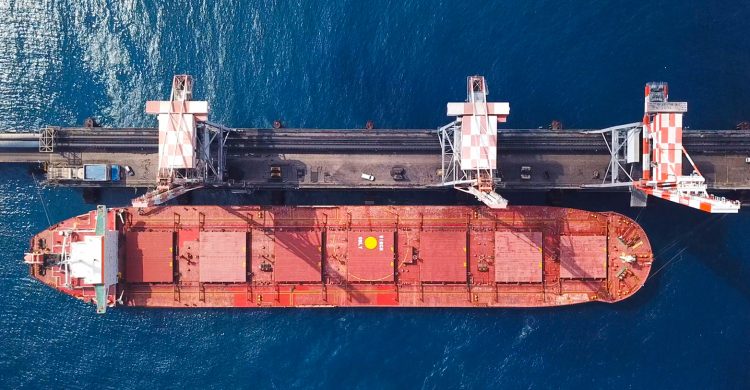
Its Resources and Energy Quarterly report published in June revealed that the big three commodities contributed $100 billion, $47.4 billion, and $27.4 billion respectively.
But the report forecast COVID-19-related price reductions for most key commodities, with LNG the worst hit while gold benefited from the economic uncertainties.
The forecast of $293 billion in export earnings for 2019/20 — the largest resource and energy export figure in Australian history — was down from an earlier forecast of $299 billion.
The report forecast exports of about $263 billion in 2020/21 and $255 billion in 2021/22.
It said $263 billion would be the third highest resource and energy export figure.
“Resource and energy earnings will be almost 50 per cent higher — in real terms — than earned in 2008–09, during the GFC,” the report said.
But there was a warning. The report said its forecast came with significant risks: a second outbreak of COVID-19, another surge in trade tensions, or an unexpectedly slow global recovery.
“But on balance, it remains likely that parts of the service sector will bear the brunt of the downturn, and commodities will once again buffer the Australian economy against external headwinds,” the report said.
The mining industry directly accounted for 25 per cent of the growth in Australia’s GDP in the year to the March quarter 2020.
Mining value-added rose by 1.0 per cent in the March quarter to be 4.1 per cent over the previous 12 months, driven by growth in iron ore mining.
The report said investment by Australia’s mining industry was $8 billion in the March quarter 2020, up 8.8 per cent over the past year.
Strong prices for gold, iron ore and other minerals are leading to new investment plans, including the re-opening of mines. However, investment in new greenfield projects remains well below the levels of the previous decade.
The report said Australia was facing a 5 per cent contraction in economic output in 2020 because of COVID-19 before moving into positive territory in 2021, with a 4.1 per cent increase.
Examining key commodities, the report said:
Iron ore prices had held up well, with the price forecast to average $US79 a tonne in 2020 before reducing to $US65 a tonne by 2022. Export volumes are expected to grow from an estimated 852 million tonnes in 2019–20 to 915 million tonnes by 2021–22. Iron ore prices are expected to largely hold at current levels over the remainder of 2020, as Chinese demand absorbs an expected slow pickup in supply.
LNG export earnings are forecast to decline from an estimated $47 billion in 2019/20 to $35 billion in 2020/21, weighed down by low contract and spot prices, before edging up to $36 billion by 2021–22.
Oil prices are forecast to increase in the second half of 2020, but to remain relatively low as the COVID-19 pandemic limits global consumption. Oil prices are forecast to remain low for the rest of 2020 and persist for longer than other energy commodities, as the recovery in global oil consumption is expected to be particularly slow. Prices in 2021 are forecast to recover to $US45 a barrel, reaching US$47 a barrel in the December quarter and to average US$53 a barrel in 2022.
Gold is forecast to reach an eight-year high, averaging about $US1,630 an ounce in 2020 before falling to $US1,510 an ounce in 2022 amid economic recovery. Australia’s gold mine production is forecast to reach a peak of 381 tonnes in 2021–22, as high prices encourage an expansion in production. The value of Australia’s gold exports is forecast to reach a record $32 billion in 2020–21, driven by higher prices and export volumes, before declining to $30 billion in 2021–22, as gold prices ease back.
Aluminium prices are forecast to fall by 8.3 per cent in 2020, to average $US1,643 a tonne, before recovering to $US1,726 a tonne by 2022. The global aluminium industry is facing challenging conditions caused by the impacts of COVID-19, with slowing demand, increasing supply, and rising inventory levels.
Copper exports are forecast to rise from an estimated 925,000 tonnes in 2019–20 to around 966,000 tonnes in 2021–22 (in metal content terms), as output from existing Australian mines expands and new mines start. Prices are forecast to fall to $US5,560 a tonne in 2020 then reach $US6,240 a tonne in 2022.
Nickel export earnings are forecast to strengthen on the back of growing export volumes and recovering prices, reaching $6.8 billion in 2021–22, up from an estimated $4.3 billion in 2019–20. In 2020, the nickel price is forecast to average $US12,600 a tonne, down 9.5 per cent on the 2019 average price of $US13,900 a tonne. But the market is forecast to tighten, pushing the price up to a forecast $US15,100 a tonne in 2022.
Zinc prices are expected to remain soft for the rest of 2020, with the COVID-19 pandemic weighing on an already weakening market Prices are forecast to rise 3.1 per cent to $US2,055 a tonne over 2020 to 2022. Australia’s zinc export earnings are forecast to decline from $3.5 billion in 2019–20 to around $3.2 billion in both 2020–21 and 2021–22 based on an appreciating Australian dollar, despite increasing production and rising prices.Lithium: The spodumene price (delivered to China) fell by 17 per cent to $US425 a tonne in the first five months of 2020. Prices are forecast to remain flat at $US425 a tonne in 2021 and 2022 until increasing electric vehicle uptake makes shortages possible after 2022.Australian lithium production is expected to fall from 208,000 tonnes (lithium carbonate equivalent) in 2019–20 to 146,000 tonnes in 2021–22, after a sharp pullback in 2020–21 (to 131,000 tonnes) due to continued weakness in spodumene prices.